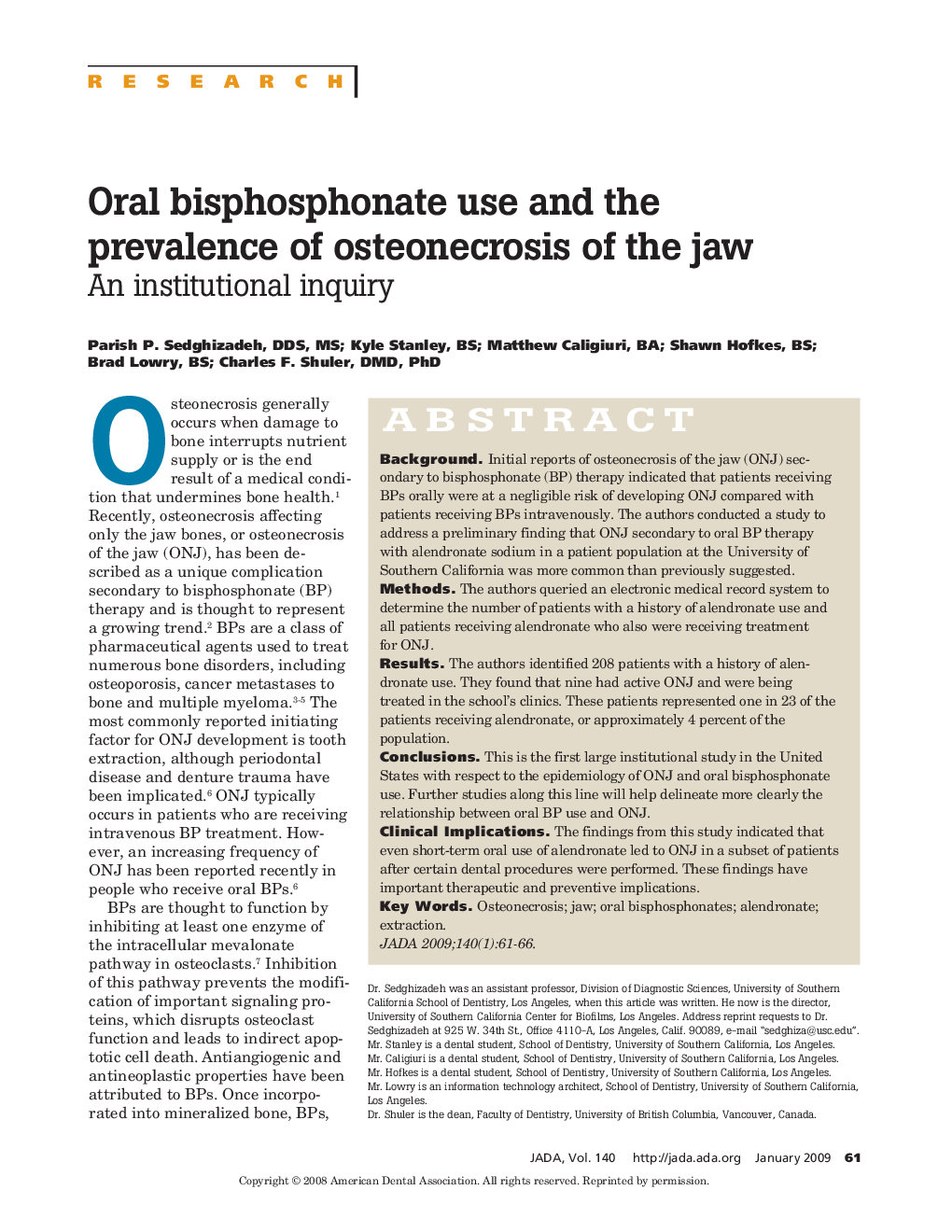| Article ID | Journal | Published Year | Pages | File Type |
|---|---|---|---|---|
| 3139016 | The Journal of the American Dental Association | 2009 | 6 Pages |
ABSTRACTBackgroundInitial reports of osteonecrosis of the jaw (ONJ) secondary to bisphosphonate (BP) therapy indicated that patients receiving BPs orally were at a negligible risk of developing ONJ compared with patients receiving BPs intravenously. The authors conducted a study to address a preliminary finding that ONJ secondary to oral BP therapy with alendronate sodium in a patient population at the University of Southern California was more common than previously suggested.MethodsThe authors queried an electronic medical record system to determine the number of patients with a history of alendronate use and all patients receiving alendronate who also were receiving treatment for ONJ.ResultsThe authors identified 208 patients with a history of alendronate use. They found that nine had active ONJ and were being treated in the school's clinics. These patients represented one in 23 of the patients receiving alendronate, or approximately 4 percent of the population.ConclusionsThis is the first large institutional study in the United States with respect to the epidemiology of ONJ and oral bisphosphonate use. Further studies along this line will help delineate more clearly the relationship between oral BP use and ONJ.Clinical ImplicationsThe findings from this study indicated that even short-term oral use of alendronate led to ONJ in a subset of patients after certain dental procedures were performed. These findings have important therapeutic and preventive implications.
